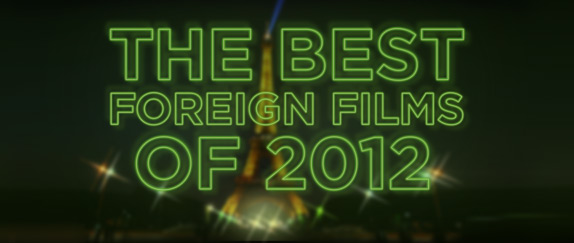Genre: Crime Drama
Director: Masahiro Shinoda
Starring: Ryo Ikebe, Mariko Kaga, Takashi Fujiki, Chisako Hara
Duration: 96 min.
Summary:
A yakuza, fresh out of prison, becomes entangled with a beautiful and
enigmatic gambling addict; what at first seems a redemptive relationship
ends up leading him further down the criminal path.
Pale Flower is a film directed by Masahiro Shinoda. This is a very stylish film-noir like yakuza story from the Japanese New Wave of the 1960s, recently released by the Criterion Collection on Blu-Ray. Every so often you stumble upon a film that completely takes your breath away from start to finish, this was one of them. With an beautifully crafted visual and audio style that is perfectly composed and edited, and a timeless story anchored by a mercilessly cool anti-hero.
After a brief voice-over montage, the astonishing opening scene takes place in a seedy gambling den filled with various degenerates trying to get lucky. Among them is Saeko (Mariko Kaga), a very beautiful young woman, who at first glance looks out of place, but is completely comfortable in the male dominated environment. The sounds of repetitive chanting from the dealer calling the game fill the room. Then in walks the narrator, Muraki (played by Ryo Ikebe) a tough gangster fresh out from prison for murder, and he is immediately greeted with awe and respect by an underling. The camera then cuts and pans around the room, observing the game and its players for several minutes while the opening credits are shown, backed by a brilliant score from Tôru Takemitsu. With no dialogue except the dealer's rhythmic calls and no explanation for the fast paced game, we are left to decipher the events by reading the players' faces and actions.
As the story plays out, Muraki quickly becomes attracted to the reckless and thrill seeking Saeko, they embark on a relationship not unlike the one in Godard's Breathless, and the stakes of their dangerous encounters soon escalate to the point of no return. These characters were made for each other, Muraki confident with a detached cool, and Saeko brash with an equally emotionless demeanor, and the actors both perform very well.
Along with the numerous memorable gambling scenes, there are several other visually amazing scenes. A high speed street race through Tokyo at night where we get a rare glimpse of emotion from Saeko as she joyfully pushes her convertible to the limit. A thrilling back alley chase as Muraki is stalked by a rival psychopath with a penchant for throwing knives. And an incredibly stylized dream sequence as Muraki has a nightmarish vision of Saeko's fate. After a brief voice-over montage, the astonishing opening scene takes place in a seedy gambling den filled with various degenerates trying to get lucky. Among them is Saeko (Mariko Kaga), a very beautiful young woman, who at first glance looks out of place, but is completely comfortable in the male dominated environment. The sounds of repetitive chanting from the dealer calling the game fill the room. Then in walks the narrator, Muraki (played by Ryo Ikebe) a tough gangster fresh out from prison for murder, and he is immediately greeted with awe and respect by an underling. The camera then cuts and pans around the room, observing the game and its players for several minutes while the opening credits are shown, backed by a brilliant score from Tôru Takemitsu. With no dialogue except the dealer's rhythmic calls and no explanation for the fast paced game, we are left to decipher the events by reading the players' faces and actions.
As the story plays out, Muraki quickly becomes attracted to the reckless and thrill seeking Saeko, they embark on a relationship not unlike the one in Godard's Breathless, and the stakes of their dangerous encounters soon escalate to the point of no return. These characters were made for each other, Muraki confident with a detached cool, and Saeko brash with an equally emotionless demeanor, and the actors both perform very well.
Shinoda's film borrows heavily from American film noir and the French New Wave, the story is bleak, nihilistic, and offers no redemption or emotional payoff for the morally corrupt protagonists. Yet I still found it an uniquely refreshing, gorgeously crafted, and brilliantly executed piece of cinema. One that I can unequivocally call an instant favorite.



























15 comments:
i love noir aswell, will give this a watch!
benf199105.blogspot.com
omg i want to see this movie, i love noir, i love new wave, i love le samourai, i just ordered the dvd from amazon based on your review. i have been researching what films to watch on my history of film noir and this never came up, had never heard of this film until now. thank you so much
I feel classy whenever I visit your blog!
That's a pretty high rating. I'm going to have to track this one down.
Sounds like it's worth a watch.
Very convincing review!
I remember hearing about this some time ago, but now I'm definitely going to watch it.
I had never heard of it either until I saw it on the coming soon list a couple months ago. I think if you love those things, you should really enjoy this one too
I feel dirty whenever I visit yours, lol.
Thanks Jack. I wrote that one up quickly and I ramble a bit more than I usually like to but I think it works.
You know at first.. I thought this just wouldn't seem to be my type of movie. I'm now thinking otherwise, this sounds and looks to be not just decent, but ticks off many of the qualities I like in a movie. I'll get my hands on it soon.
Great review!
The last shot totally makes this movie worth watching. The rays of light!
Sounds intriguing, duly noted, will add to my to-see-list ( : I'm interested in
finding out more about Asian cinema, there are no doubt many gems like this I have yet to find.
Do you know the Japanese director Hiroshi Teshigahara? - he's one of those should be more widely known foreign directors of the past."The Face Of Another" and "Woman in the Dunes" both took my breath away . There is more to Asian cinema than Kurosawa ( ;
so we finally got to 1964 and pale flower, thank you once again for bringing it to my attention with your review. wow isn't strong enough to describe the visual and aural impact of this movie but it will have to do for now. i'm even considering revisiting my yakuza list to make it more complete. no yakuza list should be without this movie somewhere near the top that's for sure.
Thank YOU for trusting in my review, and following up on it.
This still is the only film I've seen from Shinoda, he's a director I really need to see more of. But it certainly does belong on any decent yakuza list. How did it hold up for you as a noir?
The booklet from Criterion has pointed me in the direction of several other Shinoda and Japanese New Wave films that I'd never heard mention of before so yeah I'm with you on the needing to see more of his work.
As a film noir it couldn't get any more striking visually, the use of light especially but content wise it felt closer to a Jim Thompson novel than the classic Hollywood movement, which makes it an interesting hybrid of noir and soleil.
The other consideration should be the influence of Godard and Truffaut et al which is obvious but whereas Godard played with genre expectations (amongst other things) Shinoda plays it straight and in doing so created a much more interesting piece of genre art than Godard and even Truffaut's Tirez sur le Pianiste pales in comparison.
Post a Comment